CNN.com
US stealth jets arrive in South Korea as North Korean rhetoric heats up
Story highlights
- North Korean, US officials both say dangers of war growing
- US and South Korea to hold weeklong air combat exercise
(CNN)Tensions
on the Korean Peninsula escalated over the weekend as US stealth
fighters moved into the region and official sources from both North
Korea and the US said the chances of war are growing.
The bellicose rhetoric from North Korea came in two phases: On Saturday, a statement from its Foreign Ministry said US President Donald Trump is "begging for a nuclear war" through what it called an "extremely dangerous nuclear gamble on the Korean Peninsula";
A
day later, a commentary from Pyongyang's Rodong Sinmun newspaper,
carried by the official Korean Central News Agency, said US-South Korea
joint air exercises scheduled for Monday to Friday are a "dangerous
provocation" pushing the region "to the brink of a nuclear war."
From the US side, White House national security adviser HR McMaster told a conference in California on Saturday that the chances for war on the Korean Peninsula grow daily.
"I
think it's increasing every day, which means that we are in a race,
really, we are in a race to be able to solve this problem," McMaster
told an audience at the Reagan National Defense Forum in Simi Valley.
McMaster
made the comment when asked if North Korea's launch of an
intercontinental ballistic missile Tuesday had increased the chance of
war.
"There
are ways to address this problem short of armed conflict, but it is a
race because he's getting closer and closer, and there's not much time
left," McMaster said, referring to North Korean leader Kim Jong Un.
With every missile launch or nuclear test, Kim has improved his country's capabilities, McMaster said.
Air combat exercise to begin
Meanwhile,
South Korean media showed six US Air Force F-22 Raptors, Washington's
top-of-the-line stealth fighters, arriving in South Korea on Saturday to
participate in the Vigilant Ace 18 air combat exercise, an annual
US-South Korea drill the US Air Force says is designed to boost the
"combat effectiveness" of the alliance.
Some
230 aircraft and 12,000 personnel from the US and South Korea are
participating in the weeklong exercise, according to a US Air Force
statement.
A South Korean defense
official confirmed to CNN on Sunday that the US is sending dozens of
high-end fighters, bombers and support aircraft to the drills.
























"The
US aircraft that have landed on South Korea include six F-22s, six
F-35s, six EA-18Gs," the official said. "More than 10 F-15Cs and F-16s
have also been deployed for the drill."
These
aircraft will stay in South Korea for the week. They will be joined by
more F-35bs -- the Marine Corps version, based in Japan -- B-1 bombers
and E-3 airborne warning and control system (AWACS) aircraft that will
fly in to join the wargames and then return to bases elsewhere, the
official said.
But it is the stealth fighters that experts say pose the biggest threat to Pyongyang.
Cloaked with the world's most advanced stealth coating, the F-22s and F-35s would likely be called upon to lead a potential air campaign against North Korea should the situation escalate to the point of using military force, experts say.
While
the North Korean military maintains capable anti-air weaponry, their
radar systems would be unable to detect the stealth fighters before a
strike on those defensive systems.
The
Rodong Sinmun commentary said the aerial wargames show "the enemies'
moves to start a nuclear war have reached a dangerous stage."
"It is an open, all-out provocation against the DPRK, which may lead to a nuclear war any moment," it continued.
But it also put up bravado over the presence of the F-22s and F-35s.
"The
stealth fighters which the enemies boast so much of will not escape the
fate of a tiger moth," the North Korean commentary said.
North Korean threat to US mainland
The
exercises come less than a week after Pyongyang fired off an
intercontinental ballistic missile it claims can reach the "whole"
mainland of the United States.
A US official said Saturday technical analysis of that missile's flight is ongoing but the "the North Koreans had problems with re-entry."
It
is likely the ballistic missile, fired higher than any previous North
Korean missile, broke up as it re-entered Earth's atmosphere, the
official said.
Still,
the ability of the new missile to fly higher and longer than others in
the past signals North Korea's intent to develop weapons capable of
attacking the US.
At the California
forum, McMaster said Kim was extremely unlikely to change his behavior
"without some significant new actions in the form of much more severe
sanctions" and "complete enforcement of the sanctions that are in
place."
He pushed China to do more, including cutting off North Korean oil imports.
"We're
asking China not to do us or anybody else a favor," he said. "We're
asking China to act in China's interest, as they should, and we believe
increasingly that it's in China's urgent interest to do more."







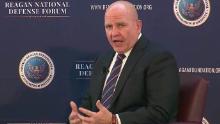
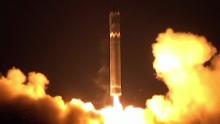
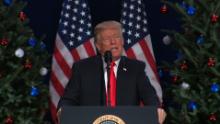
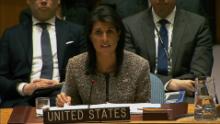
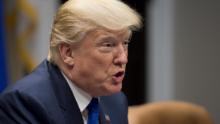



























No comments:
Post a Comment